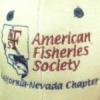
Originally Posted by
ycflyfisher

Salmonid,
I think itís easy to overlook the diminishing CWP issue thatís a factor this year, because you have to go back all the way to 2009 for the last year Trinity Lake was anywhere close to as low as it is this year. It just hasnít been a legit reason for concern in the recent past.
Iíve never seen any realtime (or summary) export data for the T, but Iíve never really looked for it. Iím sure itís available somewhere. The 2000 ROD that 26c3 posted a link to does briefly discuss approximate amounts by which diversion decreases in dry years if memory serves. The number that typically is cited since the 2000 ROD is a ~47/53 split between ecosystem/diversion for the Trinity.
Running some rough numbers based on area under the curve of the current ďcritically dryĒ river release hydrograph that goes to 300cfs beginning in Oct, assuming the 47/53 ecosystem/diversion split applies for the period, assuming inflow similar to last summer, and approximating evap loss in Trinity and Lewiston Lakes between now and August 20th you get ~-155kaf for outflow, ~-175kaf for diversion, ~+40kaf for inflow, and ~-20kaf for evap for a net loss of about -290kaf between now and Aug 20th. Iím guessing we'll see Trinity Lake down below 1M acre feet before Sept 1. It was at 1.46M af on Aug 20th of last year.
Iíd definitely like to see a minimum CWP set for Trinity Lake, where once that level triggers all diversion has to stop. The unfortunate reality as I see it, for something like that to be implemented, major disaster in some form will have to strike on the Klamath and an ESA/ imperilment battle will need to be won at the Federal court level. Itíd be great to get something like that without a mitigable ecosystem disaster that potentially pummels the Klamath and itís listed species, but Iím not seeing that battle being winnable on concern alone.
Hopefully we dodge the bullet this year and get a wet 2014/2015 winter.




 Reply With Quote
Reply With Quote




Bookmarks